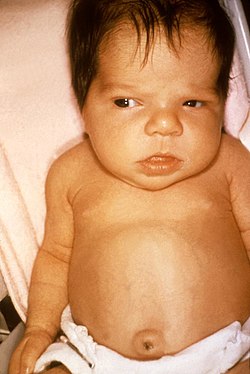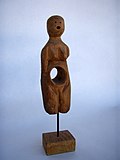Search results
Appearance
There is a page named "Neonatal nursing" on Wikipedia
- Neonatal nursing is a sub-specialty of nursing care for newborn infants up to 28 days after birth. The term neonatal comes from neo, "new", and natal,...19 KB (2,391 words) - 03:28, 7 April 2025
- common functions of direct nursing care Neonatal nurses specialize in working with the youngest patients(infants). Neonatal nursing focuses on providing care...14 KB (1,444 words) - 20:07, 7 April 2025
- requirements for neonatal nurses. Neonatal nurses are registered nurses (RNs), and therefore must have an Associate of Science in Nursing (ASN) or Bachelor...46 KB (5,378 words) - 22:45, 4 April 2025
- founder of Neonatal Network (1981) and the National Association of Neonatal Nurse (1984). He is the originator of the Academy of Neonatal Nursing (2001)....4 KB (346 words) - 19:25, 12 December 2024
- therapy for the treatment of neonatal jaundice: A systematic review and network meta-analysis". Journal of Neonatal Nursing. 26 (1): 17–24. doi:10.1016/j...31 KB (3,249 words) - 12:30, 28 March 2025
- registered nurse certified in neonatal intensive care (RNC-NIC) is a neonatal intensive care nurse who has earned nursing board certification. The certification...2 KB (148 words) - 00:53, 18 September 2022
- Neonatal medicine)training in neonatology as a subspecialty. Neonatal nursing is subspecialty of nursing that specialize in neonatal care. Rather than focusing on a particular...20 KB (1,919 words) - 12:49, 31 January 2025
- services nursing Neonatal nursing Neurosurgical nursing Nephrology nursing Nurse attorney Nursing informatics Nursing management Nursing research Nurse...3 KB (246 words) - 03:34, 19 March 2025
- The National Association of Neonatal Nurse Practitioners (NANNP) is the national association that represents neonatal nurse practitioners in the United...13 KB (1,563 words) - 10:17, 2 February 2025
- Neonatal Network: The Journal of Neonatal Nursing is a bimonthly peer-reviewed healthcare journal on neonatal nursing. It is the official journal of the...2 KB (95 words) - 21:44, 18 March 2024
- and parenting skills for preterm infants in the neonatal intensive care unit". Journal of Neonatal Nursing. 23 (3): 151–158. doi:10.1016/j.jnn.2016.09.003...60 KB (7,768 words) - 20:01, 8 March 2025
- in low-risk neonatal nursing RNC-MNN: Registered nurse certified in maternal newborn nursing RNC-NIC: Registered nurse certified in neonatal intensive care...26 KB (2,990 words) - 00:49, 20 August 2024
- the professional nursing organization for obstetrical nurses is the Association of Women's Health, Obstetric and Neonatal Nursing (AWHONN). Obstetrical...7 KB (695 words) - 11:07, 16 September 2024
- Childbirth (section Neonatal infection)postpartum hemorrhaging, low Apgar scores, neonatal infections, requirement for neonatal resuscitation, and neonatal admission to intensive care. However,...172 KB (18,546 words) - 13:45, 28 March 2025
- mitigate pain while doing neonatal heel prick procedures in a 2010 article for the Journal of Perinatal & Neonatal Nursing. Their sample size included...83 KB (8,909 words) - 01:19, 11 February 2025
- Obstetric and Neonatal Nurses and the National Association of Neonatal Nurses". Journal of Obstetric, Gynecologic, & Neonatal Nursing. 30 (1): 41–51...7 KB (583 words) - 14:33, 8 June 2024
- Surgeons of Ireland Faculty of Nursing and Midwifery Academy of Medical-Surgical Nurses (AMSN) Academy of Neonatal Nursing Alliance of Young Nurse Leaders...8 KB (737 words) - 16:04, 26 January 2025
- Mothers of Infants in the NICU". Journal of Obstetric, Gynecologic, and Neonatal Nursing. 47 (1): 114–121. doi:10.1016/j.jogn.2016.12.007. PMID 28482172. S2CID 39562650...163 KB (19,360 words) - 23:55, 8 April 2025
- The Journal of Perinatal & Neonatal Nursing is a peer-reviewed nursing journal of perinatal nursing and neonatal nursing. Each issue is presented in a...2 KB (77 words) - 03:24, 26 April 2023
- believe that she can return to some nursing and I would agree with this. She has suggested pediatric nursing, neonatal nursing and possibly even the cancer unit
- evidence of increased adverse effects to fetus/neonate or woman from laboring in water or water birth. Neonatal swimming can accelerate babies growth in early
- one centigrade lower than oral temperature. spectroscopic - common for neonatal nurses only. Factors influencing temperature include Maturity - the elderly








